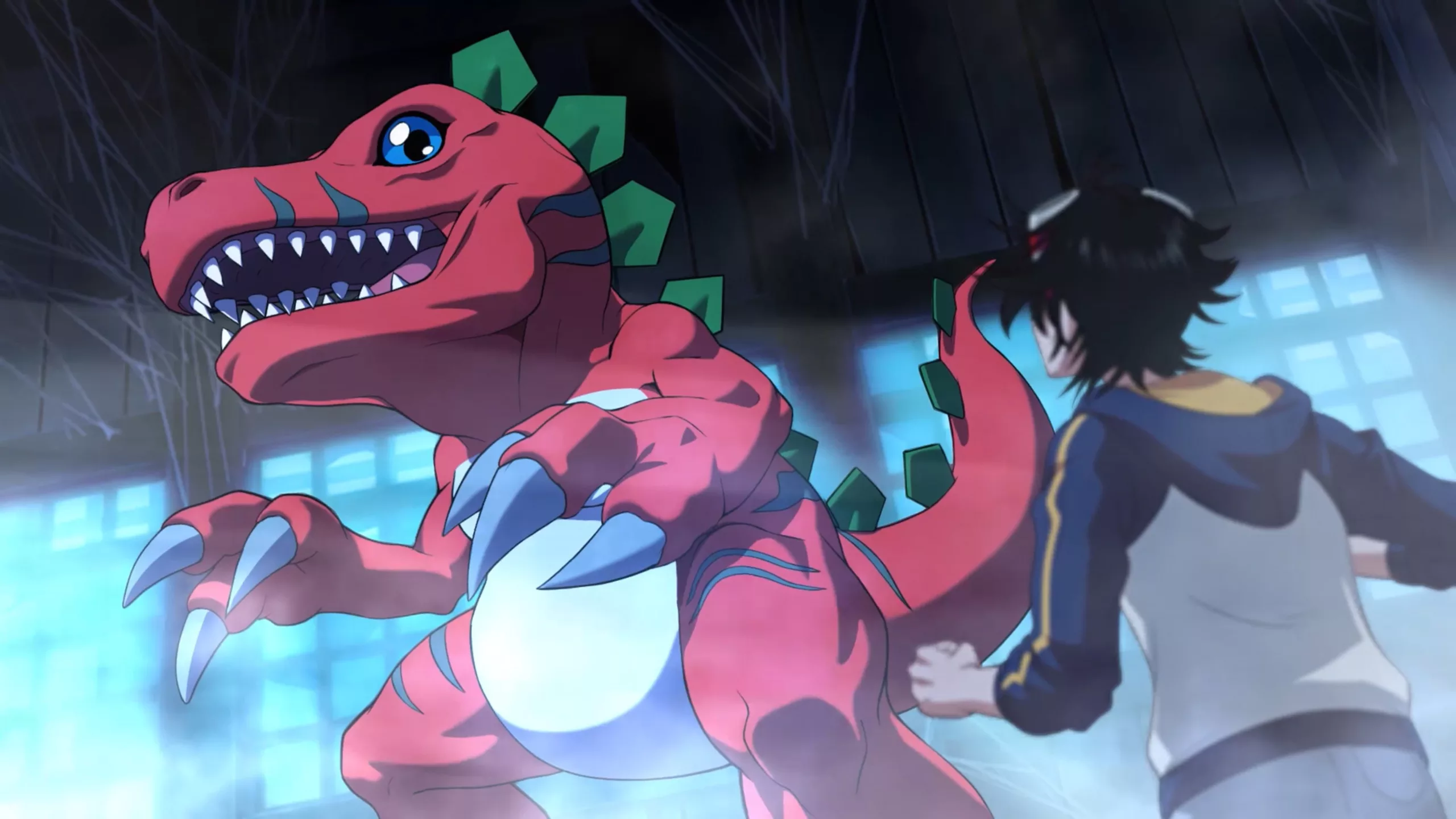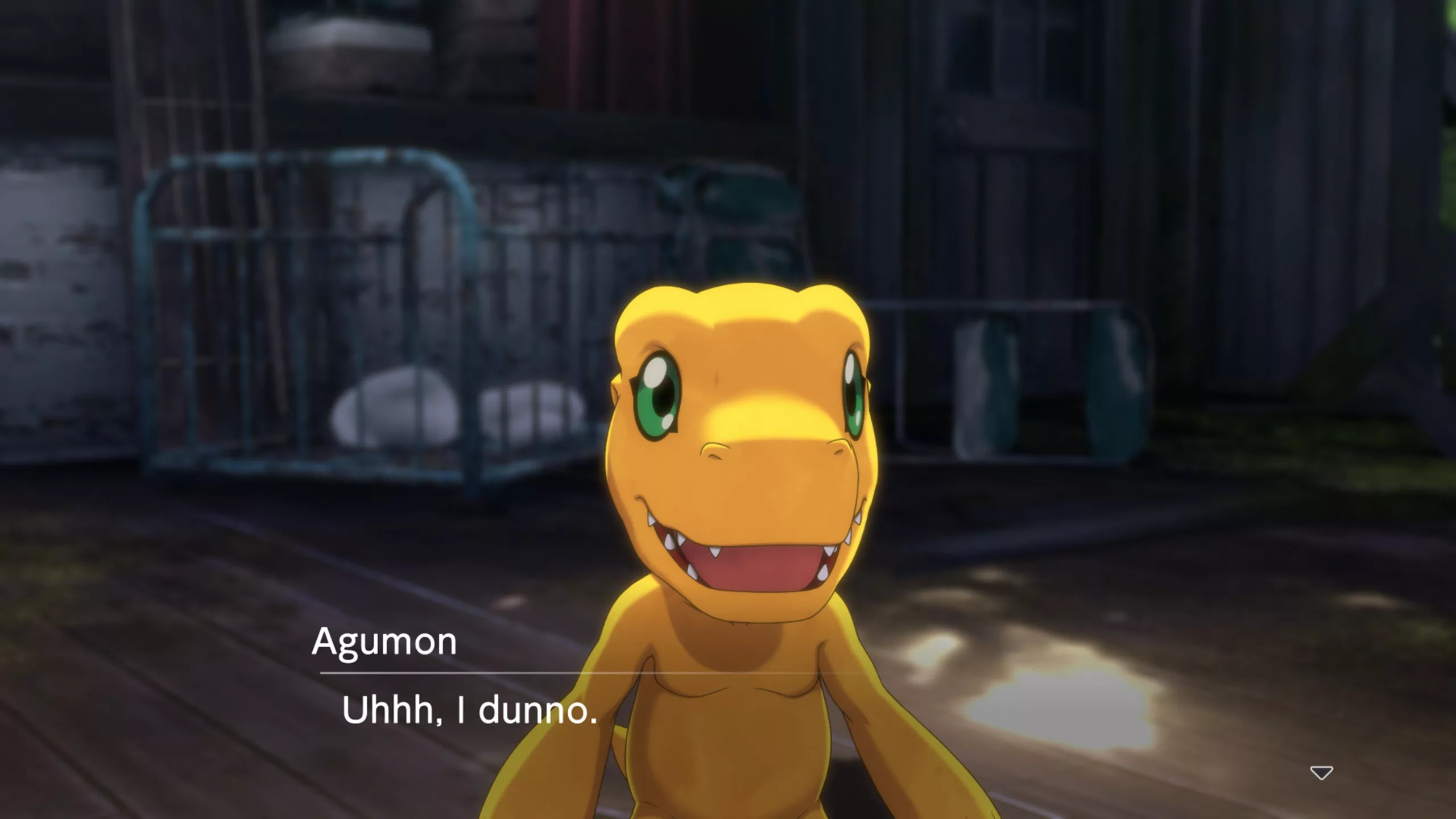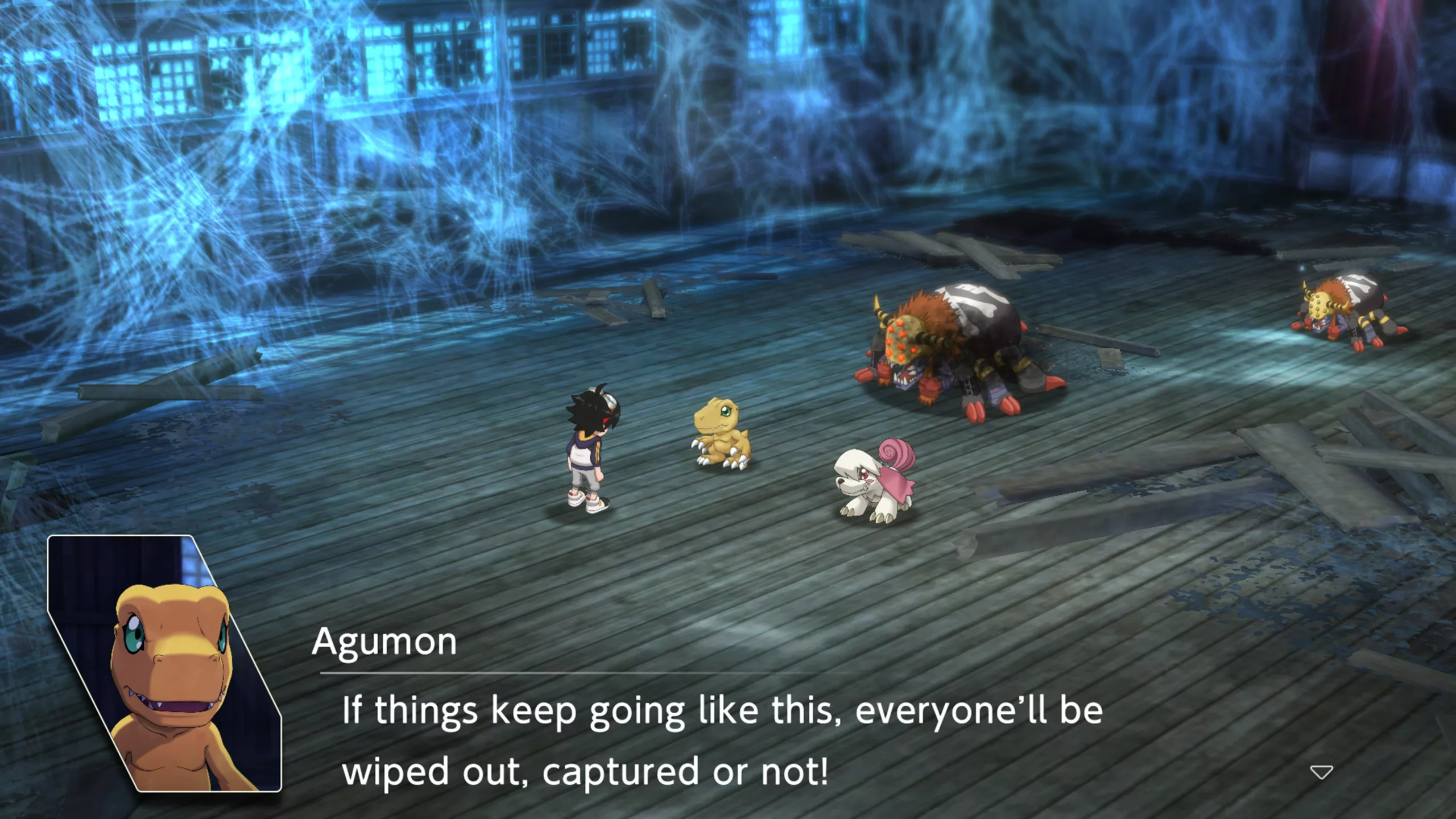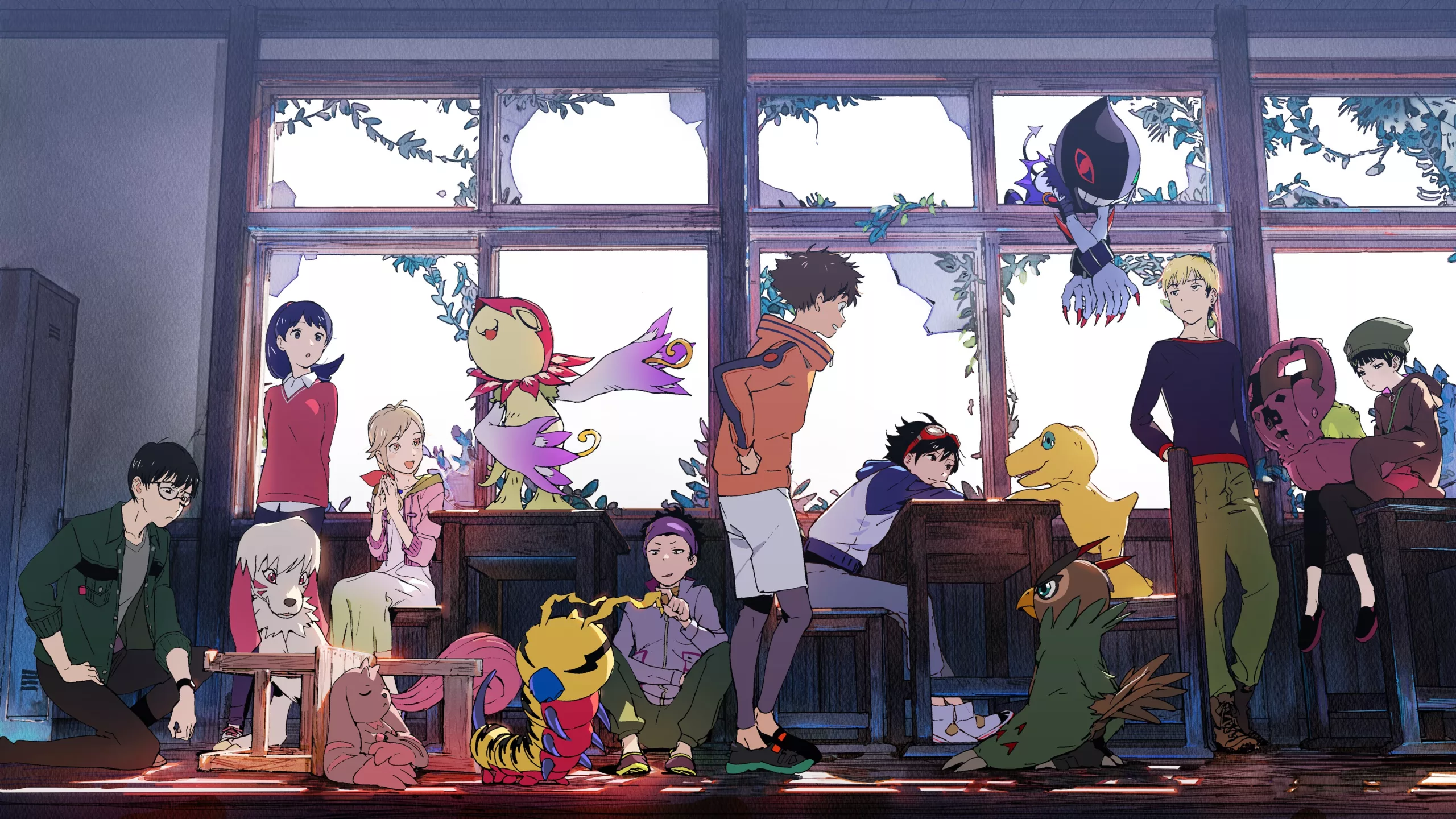Digimon Survive tells the story of a group of students on a historical studies extracurricular activities camp during spring break. On the second day, Takuma and two of his friends investigate a famous local temple to uncover the legend of the Beast Gods. During their exploration, they see their friends being attacked by a group of Digimon. Following the encounter, our group of heroes discovers that they are in another world and they need to find a way home.

Digimon Survive isn’t your typical Digimon experience. The game combines two vastly different genres: Strategy Role Playing Games (or SRPG) and Visual novels (where you spend more of the time reading than gaming). While the latter is pretty straightforward, the former might be a bit more tricky to grasp. While typical JRPG games have a simple wait your turn, attack routine, the SRPG does follow this trope, but you also have to move around your characters on a grip, and movement can be limited as well.
As with any RPG, your characters have standard attacks and more powerful skills that require SP. Like typical RPGs, your Digimon will acquire new skills, however instead of learning new abilities via the traditional way (leveling up by gaining XP), new and stronger skills will replace current skills as your Digimon evolves. And much like the Final Fantasy or Shin Megami Tensei series, elements do play a role in battle as using elemental weakness on specific enemies will cause bonus damage, but the difference between using a weakness or normal attack is barely noticeable, and isn’t properly exploited as a game mechanic.

Thankfully, via visual novel sequences, players’ decisions during conversational events have a certain impact on the game’s story which can lead down the path of one of three possible routes a.k.a. Karma paths: Moral, Harmony, and Wrathful. Additionally, depending on the path taken, this will also have an impact on Agumon’s evolution throughout the story. Also choosing the right answer when conversing with certain characters will increase your affinity towards them.
Unlike most visual novels, Digimon Survive also uses the point-and-click approach. In order to talk to someone or inspect predetermined objects, you need to move a cursor around (or scroll through with RB/LB) and interact with the selected object/character. Some items cannot be viewed via the “naked eye”, so players will need to use Takuma’s camera to find items or even scan for hidden enemies to avoid being attacked by surprise. However, like the visual novel mechanic, it brings the game to a crawl and makes it more tedious than anything else. You also need to do a lot of back and forth between areas via the map in order to progress the story.

While I admire the developers taking a chance to mix the visual novel genre with the strategy RPG one, the former part of the game is a tedious and boring chore of text reading like any other visual novel. It makes the game move at a slow pace and feels like it tries to extend it. The combat while fun and easy to pick up and play, lacks certain depths found in other RPGs.
One thing is for sure, the game looks great and I wouldn’t have expected anything less. Environments are overall well-designed and detailed. Character models look great and everything is overall colorful. Nothing really to complain about here. On the audio side of things, the voiceovers are well done as a whole. Being able to enjoy this in Japanese somehow makes the overall experience slightly more enjoyable. The soundtrack is an interesting and typical one for the RPG genre, although a lot of tracks sound a bit like b-sides from various Final Fantasy soundtracks.

Digimon Survive is a divisive game. Mixing two genres is tricky and unfortunately falls flat here. While they made the story a bit more serious than previous Digimon games, both genres used are slow. I do feel bad for Xbox owners getting their first taste of the long-running Digimon series with this SRPG/Visual Novel mash-up. The SRPG is fun but lacks the depths of the Digimon series and the visual novel aspect of it feels long, tedious, and mind-numbingly boring. It’s a questionable decision given the success of the more traditional JRPG experiences that was the Cybersleuth duology. Unless you’re a die-hard fan of Digimon or the SRPG genre (even visual novel fans will find this too long), this is a pass.
Overall
-
CX Score - 50%50%
Summary
Pros
- Combat is fun
- Darker tone story wise
Cons
- Boring
- Long dragged out sequences of conversations
- Annoying usage of the map to progress the story

